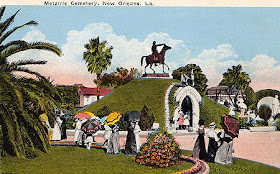 |
| Putting the Nail in the Coffin |
Have an old
house in Washington, DC? It’s most
likely that you had a dead body resting in it for a few days. I’m not talking homicide here, but a funeral. In your living room.
I just
finished up a house history for a client near 20th and Belmont Streets,
NW that had a total of four funerals that took place inside the house, all within
a twenty year time span. I often write
that the funeral took place in any given house, but now and then, a client requests
that I don’t divulge if a dead body was ever in the house.

The problem
is, if your house is more than 50 years old, it is most likely that many dead
bodies have once been inside; people either died at home or their funeral took
place in the living room. As a young
child, my mother recalls having to remove the Christmas tree from their living room
for her mother’s funeral following her death on Christmas Eve. Today, that scene might require years of therapy,
but in the 1930s that was the norm.
Most DC
residents held their funeral at home, especially before modern funeral homes
were licensed beginning in the 1930s.
You purchased a coffin made by the local furniture or cabinet maker, death
certificate, and obtained a permit to transport a body to the cemetery, and
that was the brunt of it.

Before
embalming became commercially available around the turn of the twentieth century,
funerals were obviously held soon after the death. Embalming was first developed and used during the
Civil War by Dr. Thomas Holmes who was tasked with preserving the bodies of
army officers so that they could be sent home for burial.
But
localities did not have that need, and it wasn’t until good old capitalism took
over that traveling salesmen soon began visiting towns and cities across the
nation offering embalming training and techniques, and – you guessed it –
supplies for sale. The first embalming solutions
were arsenic based but were rapidly replaced with formaldehyde.
Over time,
the liveryman, who was tasked with transporting the body, became more involved
in the overall procedure and event coordination of death, and “undertake” many
of the additional duties that began to become custom and tradition following
the Victorian period. Funeral and
funeral merchandise expansion after the turn of the twentieth led to the term “Undertaker,”
and they could be more efficient all in one place – the funeral home – beginning
in the 1930s and 1940s. They were often
located in former homes turned businesses.
Today, you
might be surprised that most States only require a certified death certificate,
a permit to transport a body, and that the body be buried, cremated, or donated
to medical science. No embalming is
required, and many relatives are beginning to once again hold funerals in their
homes as a cost saving measure.
Cemetery Party!
And as long
as we are on the topic –I know your dying to know – let’s talk a little about
cemeteries themselves. I love exploring
cemeteries, but I usually get the “how dare you" look or whispers that it is
not respectful. But then I remind them
that I’m a historian, and they are about to get a history lesson.
Cemeteries
designed during the Victorian era in the 1870s (and earlier) were meant to be
not only explored, but to be used as parks, where one might spend the entire
day, and spread out for lunch or long strolls.
They offered a respite from urban centers, high heat, and the smells of
animals and smog of burning coal.
Cemeteries were outfitted with meandering paths, benches, and meadows
where the entire family would gather and gossip. You only need to look at old postcards of
cemeteries to see that they were full of people, and not a place to avoid.
Some existing
cemeteries are now returning to their roots –
Congressional Cemetery on Capitol
Hill being an excellent example of attracting people to explore its
surroundings and grave markers by creating a
dog walkers group, volunteers for
repairing and cleaning, and even a playful “
dead man’s run” to raise funds for
the restoration.
Author's Note: Entry’s will be a bit sparse for a few weeks
as I’m on a deadline to complete my “Lost Washington” book due May 1st
Copyright Paul K.
Williams
 We recently
discovered and even more rare occurrence: both façade and floor plans for a client
in the 1500 block of E Street, SE. They were
thrilled to discover how their first floor had originally appeared. It solved many mysteries for them.
We recently
discovered and even more rare occurrence: both façade and floor plans for a client
in the 1500 block of E Street, SE. They were
thrilled to discover how their first floor had originally appeared. It solved many mysteries for them. 

















